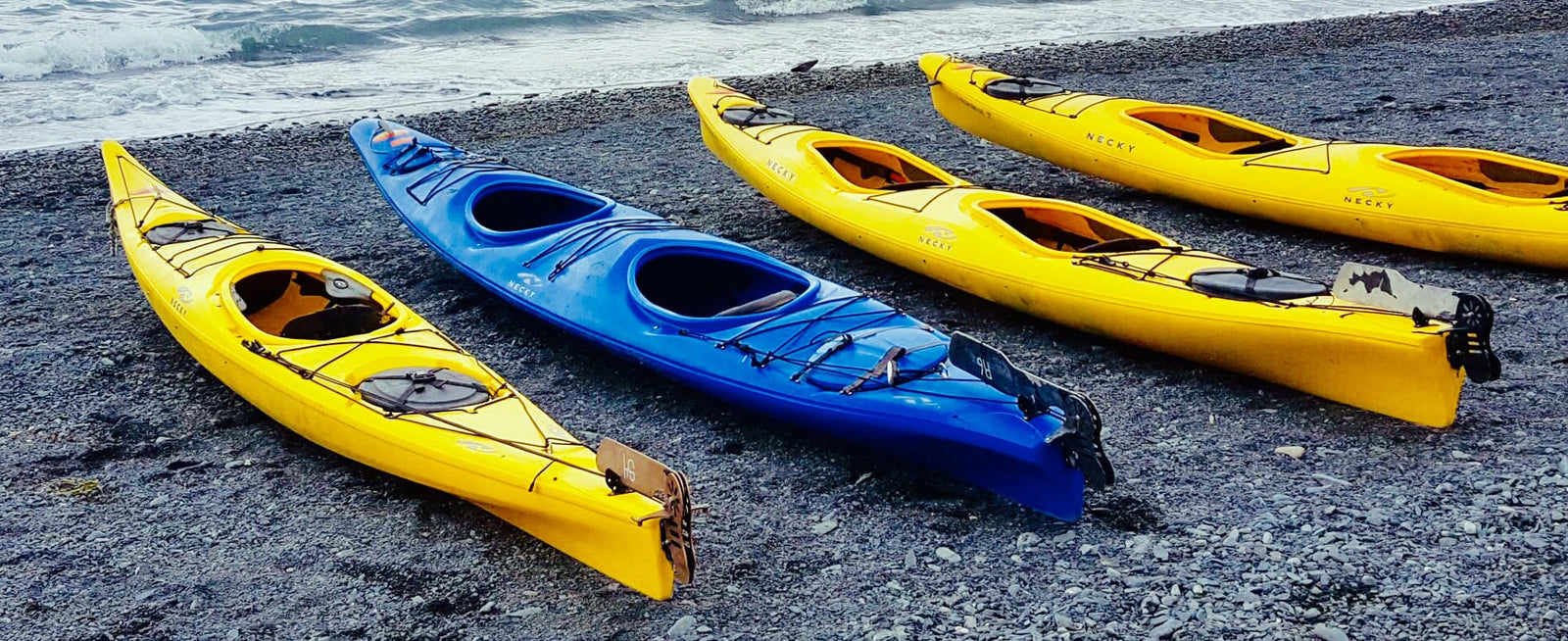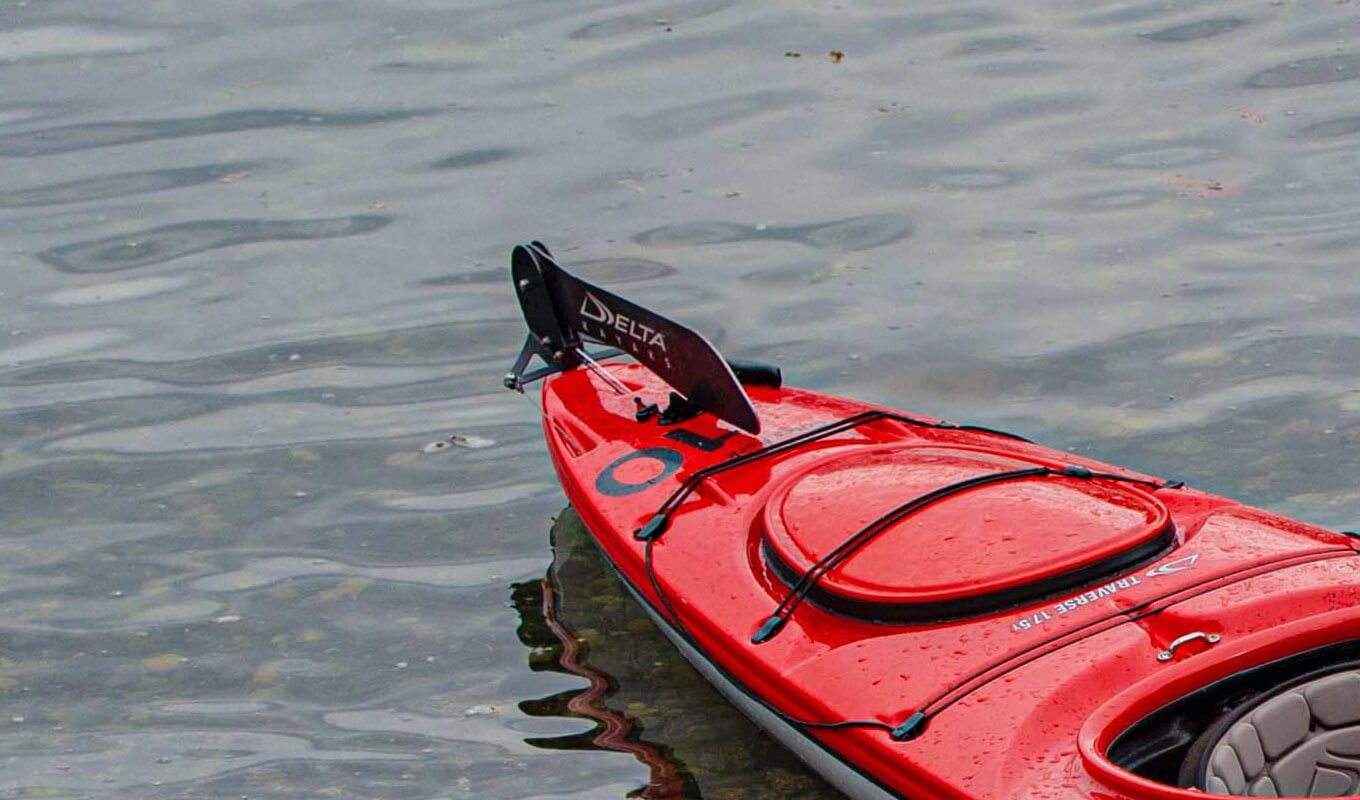Your Cart is Empty


There has been a great debate on whether a rudder or skeg for kayaking is best for improving your kayak’s overall tracking. Of course, like with many things in life, the answer comes down to personal preference, but some may even say that experienced paddlers are more than capable of paddling without either.
In this article, we’re going to get to the bottom of skegs and rudders to help you make an informed decision on which one would suit you, your kayak, and your paddling experience.
Table of Contents

Before we discuss both skegs and rudders, it’s important to first understand how a kayak moves and travels through the water.
Kayaks are able to travel through the water thanks to the force that is generated by the paddler pushing their paddle through the water. To help improve the speed and efficiency of your kayak, you’ll ideally want to travel as straight as possible.
Kayak tracking is essentially how well a kayak can move in a straight line. In perfect water and weather conditions, you’ll find it incredibly easy to stay on course. However, perfect conditions are very hard to come by, and factors such as wind, tides, or even other boats can cause your kayak to pivot from side to side, which in turn disrupts your desired straight-line paddle path.
To help combat this problem, you can choose to install a rudder or a skeg to the back of your kayak. A kayak rudder or a kayak skeg helps to improve the kayak’s tracking abilities in poor weather and water conditions.
If you have an immaculate paddling technique, then a rudder or a skeg may not be necessary, but if you’re just starting out with the sport, then these add-ons can really make all the difference.
During cross winds or quartering winds, your kayak will want to turn into the wind. We call this process weathercocking. Sea kayakers will also face the problem of broaching, which is where the kayak will turn sideways into waves.
As you start paddling forward and the kayak slices through the water, the water displaces from the front of the bow and runs down both sides of the hull. This water then forms an inverted V which helps put pressure on the hull to keep it moving in the direction you wish to paddle in.
Once the water passes the widest point of your kayak, however, the stern will be susceptible to weathercocking as the water is no longer creating the desired pressure on the hull.

A skeg, on the other hand, is a narrow fin-like blade that retracts up into a skeg box in the hull of the kayak near the stern. Unlike a rudder blade, a skeg blade cannot pivot, and instead of pedals, there is a slider on the side of the cockpit that drops and retracts the blade.
A skeg in a kayak can be adjusted to the desired depth which then helps to sit the kayak deeper into the water. By adjusting the depth, the paddler is able to balance out forces caused by wind or currents, which in turn improves tracking and keeps the kayak on course.
Kayak rudders are blades that mount to the stern of the kayak and can pivot from side to side. These blades are connected to foot pedals in that cockpit via a rudder cable or a rudder line.
Rudders allow paddlers to essentially steer with their feet. To steer right, you push the right foot pedal, and to steer left, you push the left foot pedal. It really is as simple as that. Many kayak rudders also have the ability to be flipped up and folded onto the deck when not in use.
Although rudders and skegs are slightly different, they both serve the same purpose of keeping a kayak on track without the use of paddle correction strokes. As we’ve mentioned before, skegs and rudders aren’t exactly a necessity as sea kayaks, touring kayaks, and recreational kayaks should be able to track straight in ideal conditions without the use of a rudder or a skeg.
Once weather conditions are factored in, however, then skegs and rudders play a helping hand in keeping your kayak from being pushed sideways. One of the main benefits of using both a rudder and a skeg is that you don’t need to be constantly correct your kayak’s direction with paddle strokes. These strokes require a lot of effort, they put a strain on your body, and they burn up your all-important energy.

Now that we’ve differentiated the two let’s get into the pros and cons of both skegs and rudders.

It’s safe to say that both the rudder and the skeg options have their pros and cons, and which one is best for you will come down to a few different factors. These factors include the type of paddling you’ll be doing, the environments in which you’ll be paddling, and the type of kayak you already have.
Specialized kayaks such as fishing kayaks or tandem kayaks work best with a rudder as they not only help you stay on track but also allow you to steer without changing your paddle stroke. This comes in particularly handy when fishing, as you can easily correct your direction without disturbing the water with your paddle.
Many recreational paddlers, touring paddlers, and sea kayakers, however, would find a skeg effective as it improves tracking and manoeuvrability without weighing the kayak down as a rudder would.
Many kayaks now come with built-in manufactured skeg or rudder systems that best suit that particular kayak design. With that being said, however, some skeg sea kayaks can also be adapted into ruddered kayaks to give you the best of both worlds.
All in all, it’s important to remember that you don’t need a skeg or a rudder to begin your paddling journey. Learning a proper paddling technique along with a straight-tracking kayak is equally as efficient, so keep that in mind.
Fishing and tandem kayaks typically work best with rudders, whereas recreational, touring, or sea kayaks work better with skegs.
You don’t need a skeg or a rudder on your kayak. Skegs and rudders help to improve the kayak’s tracking, but you can also achieve this by corrective strokes with your paddle.
Rudders have a few benefits that many paddlers thoroughly enjoy. The first is the fact that rudders allow you to change the direction of your kayak with foot pedals instead of using corrective strokes. By pushing the left pedal, your kayak turns left, and by pushing the right pedal, your kayak turns right.
Along with this, the other main benefit of a rudder is that it keeps your kayak moving in the direction you wish to travel in. If you paddle fairly often in windy conditions, then a rudder would improve your day out on the water.
The main purpose of a rudder is to keep your kayak running in a straight line therefore, it doesn’t really affect the stability of your kayak as a whole.
Comments will be approved before showing up.